
Welcome to the ultimate beginner’s guide to adult coloring! In this blog post, Coloring for Adults 101, we’ll discover color theory and techniques, explore the many health benefits of coloring, find the most fantastic coloring supplies, and jump into recommended coloring books to start your creative journey.
Stay tuned till the end for some extra coloring tips and tricks. Let’s begin this coloring adventure!
But wait, what’s coloring all about? Well, it’s not just about grabbing crayons and going crazy (although that’s cool too!). Coloring is like telling a story, but instead of using words, you use colors to bring your imagination to life.
Affiliate Disclosure: As an Amazon Associate, I earn from qualifying purchases. Some links on this page are affiliate links, which means that if you choose to make a purchase, I may earn a small commission at no extra cost to you. I greatly appreciate your support!
What Are The Rules Of Color Theory?
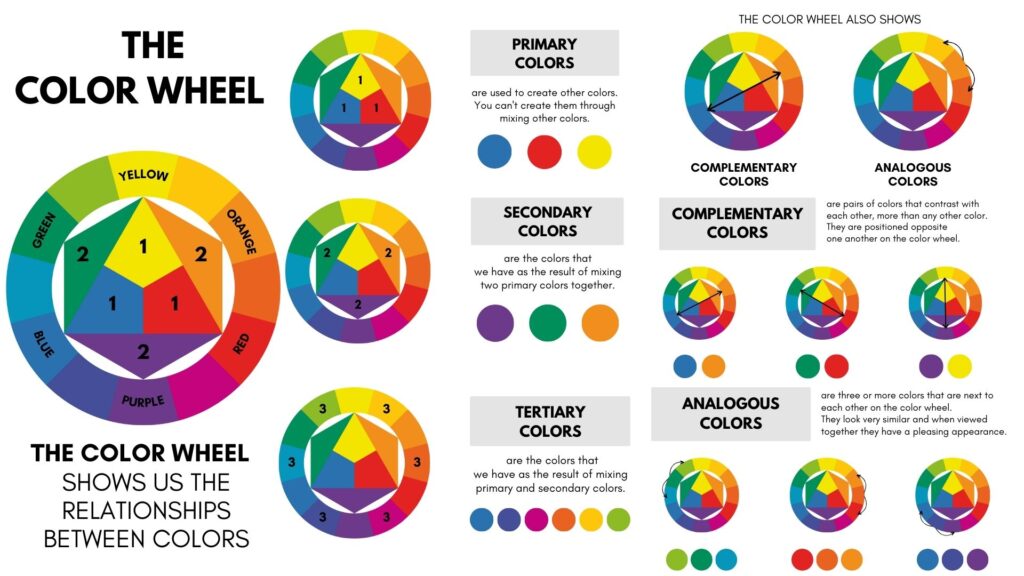
Now, let’s talk basics – it’s like the ABCs of coloring. Color theory is like a guidebook for colors, telling us how they play together in the art world.
- Primary Colors-Red, Yellow, and Blue.
- Secondary Colors- Green(made by mixing blue and yellow), Orange (created by blending red and yellow), Purple (Violet) (resulting from the combination of red and blue).
- Tertiary Colors-These colors are created by mixing a primary color with a neighboring secondary color on the color wheel. You will find tertiary colors between primary and secondary colors in hue.
Examples of tertiary colors include green-yellow, yellow-orange, red-orange, red-purple, purple-blue, and blue-green. Tertiary colors offer a broader spectrum, allowing artists to create varied color palettes.
So, if you ever wondered how these colors came to be, it’s all about the magic of mixing primary colors!
Color theory gives us the lowdown on which colors look good together and how you can mix them to make your artwork look fantastic. It’s like having a cheat sheet to ensure our colors blend and make our creations stand out!
What Is Color Therapy And How Does It Work?
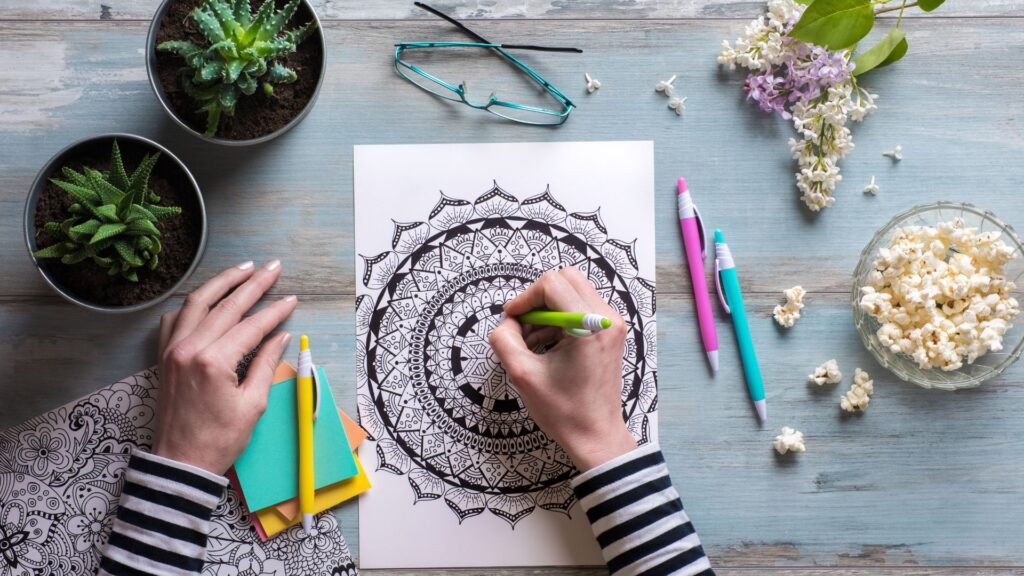
Have you ever thought about how coloring can be good for your health? It’s pretty amazing! When you color, it’s like a special therapy that can help you feel better. It’s not just about the colors you choose; it can have some cool health benefits for your body and mind. So why not try coloring and see how it can make you feel?
Stress Reduction
Coloring has a calming effect on your brain and can alleviate stress. It’s a unique activity that allows your brain to concentrate and experience tranquility.
When you engage in coloring, your brain releases serotonin, a neurotransmitter that promotes a sense of calmness.
Additionally, it can reduce cortisol levels in your body, which is associated with stress. Therefore, coloring is not just enjoyable, but it also aids in relaxation and happiness.
Improved Focus and Concentration
Have you ever noticed how coloring can make you more focused and alert? Well, it’s not just your imagination. Coloring exercises your brain and helps you concentrate better.
In a world where we’re constantly bombarded with digital distractions, coloring is a great way to escape and be present in the moment. It’s like a mini vacation for your mind.
Artistic Self Expression
Coloring is a great way for people to express their creative side. It allows them to let their imagination run wild and showcase their style.
Sleep Aid
Adult coloring before bedtime has been proven to enhance sleep quality by promoting relaxation and unwinding. This makes coloring a valuable pre-sleep activity that can aid in achieving a restful night’s sleep.
Memory Boost
Coloring can help improve your memory! When you color, you must pay close attention to all the little details and patterns, which exercises your brain and enhances your cognitive abilities. So, next time you’re feeling forgetful, grab some colored pencils and start coloring!
How Can I Be Good At Coloring?
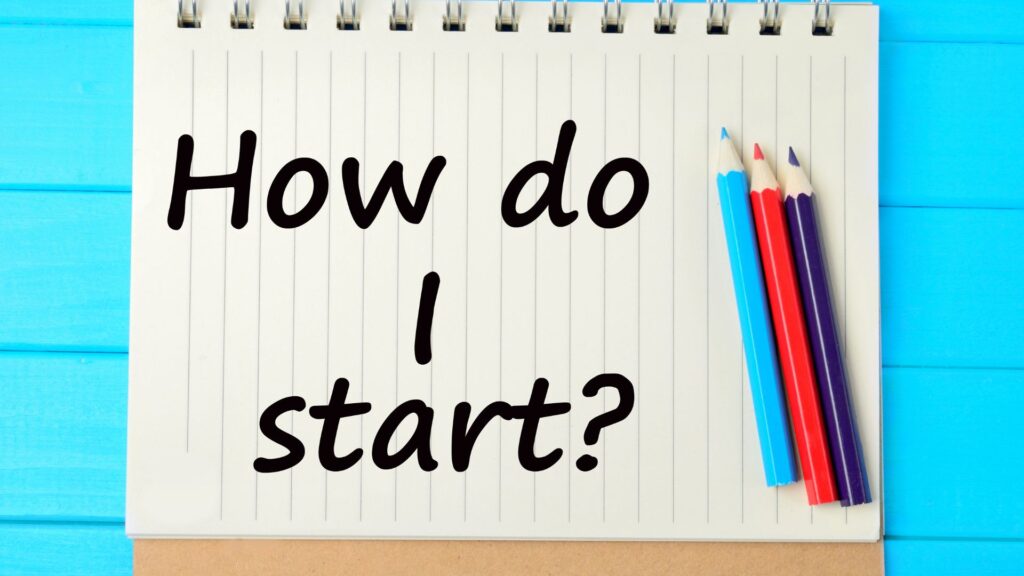
Are you ready to dive into the wonderful world of coloring? Starting this colorful journey is as simple as picking up your favorite coloring tools and letting your imagination run wild! Whether you’re a beginner or returning to this delightful hobby, keeping it light, enjoyable, and stress-free is vital.
To kick off your coloring adventure, choose the right coloring supplies. Grab a set of vibrant colored pencils, markers, or gel pens – whatever feels most comfortable for you. Quality paper is just as important, so opt for thick, smooth sheets that allow your colors to shine without any unwanted bleed-through.
Now, let’s talk about selecting the perfect coloring book. Whether you’re into intricate mandalas, enchanting nature scenes, or quirky characters, there’s a coloring book out there that will suite your taste.
Find one that sparks joy and resonates with your artistic vibe. Remember, there’s no right or wrong way to color – just let your creativity flow, experiment with different techniques, and enjoy the soothing process of bringing life to the pages.
What Is The Best To Use For Adult Coloring Books?
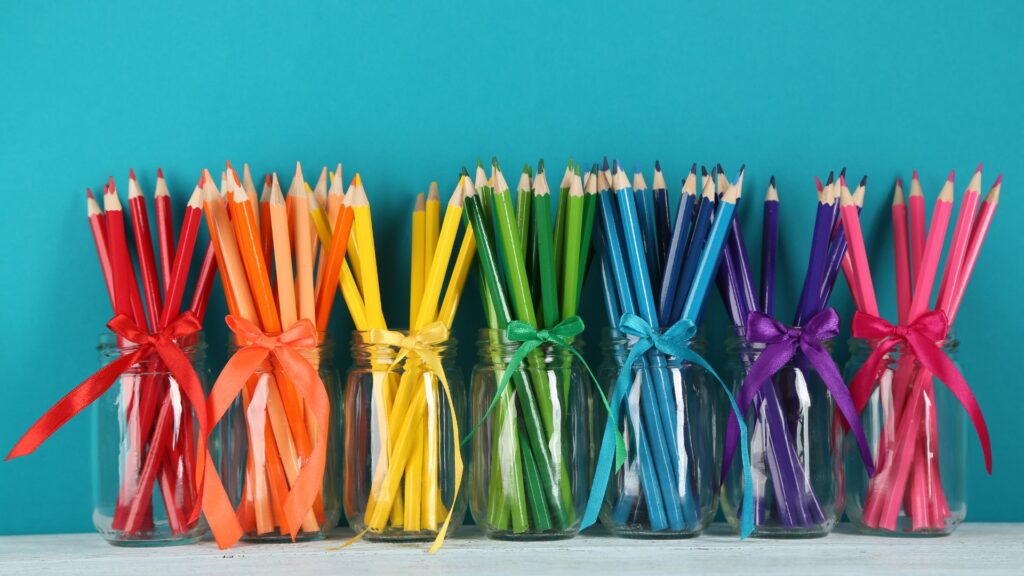
Are you ready to start your adult coloring adventure? Here’s a cool list of coloring supplies for beginners you’ll need to get started.
Best Colored Pencils
Colored pencils are awesome because they come in many colors and price ranges and are easy to use. You can color and shade with precision! Here are our top 3 picks for colored pencils for beginners.
Best Budget Friendly- Crayola Colored Pencils for Adults, 50 count
Best Quality- Prismacolor Premier Colored Pencils 72 Count
Premium Colored Pencils- Faber Castell Polychromos Artists' Colored Pencils Tin of 120
Best Markers For Coloring
Let’s be honest, not all markers are created equal. Get yourself a set of really good markers with bold and vibrant colors. It will make your coloring experience much more enjoyable. Look for ones that have two tips so you can do different coloring techniques. We’ve tested quite a few and here are some of our favorites!
Ohuhu 48-Color Brush Alcohol Brush Marker Set Dual Tip
Arteza Art Alcohol Markers Set of 72
Too Copic Sketch Basic 36 Color Set Multicolor
Best Adult Coloring Books
There are some really great coloring books out there for adults but how do you know which one is right for you? First, think about what makes you smile – whether it’s cute animals, intricate patterns, or calming landscapes. The journey of finding the right coloring book is just as fun as coloring itself!
Johanna Basford - Secret Garden
Jade Summer -100 Amazing Patterns
AlliKoa- Sea Life Coloring Book for Adults
AlliKoa- 100 Animals Adult Coloring Book
AlliKoa- Interior Design Coloring Book
Ready to dive into some awesome coloring fun? Click here to check out our cool collection of coloring books made just for you! Get ready to unleash your inner artist with tons of fun designs and patterns.
Best Pencil Sharpeners for Colored Pencils
Having a top-notch colored pencil sharpener is key to making your coloring experience more enjoyable. When your pencils are nice and sharp it helps you color inside the lines easily and makes your colors look super vibrant. Plus, with a good sharpener, you won’t have to deal with pencils breaking or getting all wobbly.
Faber-Castell Trio Sharpener Box Grip 2001 Silver
Durley DAHLE Pencil Sharpener Type 133 Black Pencil Sharpener
Best Erasers for Colored Pencils
Ever wondered why having a good electric eraser is important for coloring? If you accidentally color outside the lines. No worries! That’s where the electric eraser swoops in to save the day. It’s like having a little helper that can easily fix those mistakes, leaving your artwork looking clean and tidy. Plus, with an electric eraser, you can erase without damaging the paper or smudging your colors.
Sakura EE-3000 SumoGrip Electric Eraser, Black
Derwent USB Rechargeable Eraser
Coloring Accessories
Highlighters are fantastic for making certain areas stand out and adding a burst of brightness to your drawings. Gel pens come in a rainbow of colors and glide smoothly across the page, making your artwork pop with their bold and vivid lines. They’re perfect for adding intricate details, writing messages, or simply adding a touch of sparkle and shine to your creations.
Blending stumps are great for shading in a portrait or creating a gradient effect, they help you achieve smooth transitions between colors, giving your artwork depth and dimension. These are just a few of the many coloring accessories you can use to help improve your coloring skills.
Pentel 1.0mm Tip Hybrid Gel Grip Dx Ultra Smooth Pigment Ink Pen with Chunky Barrel - White (Pack of 12)
Castle Art Supplies 100 Gel Pens for Adult Coloring Set
Staedtler Blending Stump Set, for Pastels, Graphite, Charcoal, Artist Blender, Pack of 4 Assorted Sizes
Prismacolor Colorless Blender Pencils, 12 Pack
Craft Storage
Lastly on the list for coloring supplies for adults is somewhere to store all of your supplies. You should keep all of your coloring supplies neatly organized and easily accessible, so you never have to waste precious coloring time searching for that elusive shade of blue.
Plus, it helps protect your supplies from getting damaged or lost, ensuring they stay in tip-top shape for all your coloring adventures. Whether it’s a desktop colored pencil organizer, a portable colored pencil case, or a trusty rolling cart for supplies, having the right craft storage means you can focus on what you do best – unleashing your creativity onto the page!
Utoplike Bamboo Rotating Art Supply Desk Organizer
YOUSHARES Big Capacity Colored Pencil Case - 300 Slots large Pen Case Organizer with Multilayer Holder for Prismacolor Colored Pencils & Gel Pen
ArtBin 6892AG 2-Tray Art Supply Box, Portable Art & Craft Organizer with Lift-Up Trays, [1] Plastic Storage Case, Gray/Black
Giantex 15-Drawer Organizer Cart Office School Storage Cart Rolling Drawer Cart for Tools, Scrapbook, Paper (Multicolor)
How Can I Improve My Coloring Skills?
- Blending- To achieve blending, start by coloring with colored pencils with one color, then gently layer another color on top and blend them together. You can use a lighter shade to blend out the edges or even a blending stump to help smoothe things out. Experiment with different colors and techniques until you find what works best for you. Blending adds depth and dimension to your artwork, making it look super professional and polished.
- Shading and Highlighting– Shading is all about adding depth and dimension to your drawings by using different pressures and layers of color. Start by coloring lightly for areas that should be bright, and then gradually press harder for darker shadows. Highlighting is adding little bursts of brightness to make certain areas stand out. You can use a lighter color or even a white gel pen to add highlights to your artwork. Just remember to have fun experimenting with different shades and techniques until you find what looks best to you.
- Layering– Adding depth and richness to your artwork by building up colors one on top of the other. Start by coloring lightly with your first color, then add more layers on top to deepen the shade and make it stand out. Just remember to start with lighter colors and gradually work your way to darker ones for the best results.
- Texturing- Adding cool patterns and textures to your coloring pages to make them come alive. Try using different techniques like stippling (making tiny dots), hatching (drawing parallel lines), or even cross-hatching (drawing intersecting lines) with your colored pencils. These techniques create interesting textures that can mimic things like fur, wood grain, or even clouds.
- Stroke Patterns– Stroke patterns are all about the different ways you can use your colored pencils to create cool effects and textures. For example, you can try using short, quick strokes for a fuzzy texture, or long, smooth strokes for a sleek look. Experiment with swirls, zigzags, or even little circles to add fun patterns and details to your coloring pages.
- Cross- Hatching- To achieve cross hatching, start by drawing a set of parallel lines close together. Then, draw another set of parallel lines going in a different direction, crossing over the first set. The areas where the lines overlap create darker shades, while the spaces in between create lighter shades. Cross hatching adds depth and dimension to your coloring pages.
- Burnishing- Start by coloring with your colored pencils using firm pressure and overlapping strokes. Then, once you’ve filled the area with color, go over it again with a white or light-colored pencil using even more pressure. This helps blend the colors together and smooth out any rough spots, creating a shiny, smooth surface. Burnishing adds depth and vibrancy to your artwork.
How Do I Figure Out My Color Palette?
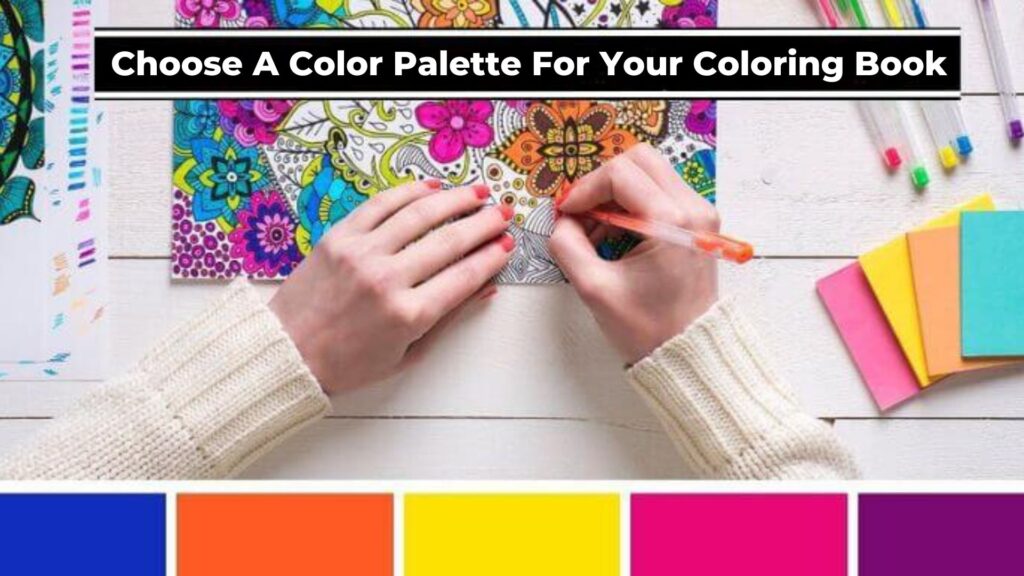
Match Your Mood
Ever notice how certain colors can evoke different emotions? Take a moment to think about the mood you want your artwork to convey. Are you aiming calm and tranquil vibe? Consider soft pastels or cool blues and greens.
Feeling bold and adventurous? Opt for vibrant reds, yellows, and oranges to add a pop of excitement to your pages. Matching your color palette to the mood of your coloring book can help set the tone for your artistic adventure.
Know Your Theme
Does your coloring book have a specific theme or subject matter? Let the theme guide your color choices, whether whimsical animals, intricate mandalas, or enchanting landscapes.
For example, if you’re coloring a page filled with lush greenery and woodland creatures, earthy greens, browns, and warm earth tones might be the perfect palette to bring the scene to life. Let your imagination roam free and explore color combinations that complement the theme of your coloring book.
Playful Pairings
One of the best parts of coloring is experimenting with different color combinations! Don’t be afraid to get playful and mix things up.
Try pairing complementary colors (those opposite each other on the color wheel) for a bold and dynamic look, or explore analogous colors (those next to each other on the color wheel) for a harmonious and cohesive palette. Get creative and trust your instincts – the possibilities are endless!
Personal Preference
At the end of the day, the most important factor in choosing your color palette is what speaks to you personally. Think about your favorite colors that make you feel happy, inspired, or at peace.
Whether you’re drawn to soft pastels, vibrant jewel tones, or soothing neutrals, let your unique style and preferences guide your color choices. After all, coloring is all about self-expression and having fun!
Test the Waters
Still not sure which colors to choose? Why not try a little color testing before diving in? Grab a scrap piece of paper and experiment with different color combinations using your chosen coloring mediums.
See how the colors interact with each other and how they look on paper. Trust your instincts and go with the color palette that resonates with you the most – it’s all about finding what feels right for you!
What Is The Best Free Coloring App?

What is digital coloring? Digital coloring is like coloring with colored pencils or markers, but instead of using physical tools, you use electronic devices like tablets or computers. You can pick colors and paint on a screen to create colorful artwork. It’s a fun and modern way to be creative without needing many supplies.
Top 3 Free Coloring Apps
1. Colorfy
- Vast Selection: Colorfy boasts a diverse collection of coloring pages, ranging from intricate patterns to charming illustrations of animals, landscapes, and more.
- Relaxing Experience: With soothing music and sound effects, Colorfy creates a calming atmosphere perfect for unwinding and de-stressing after a long day.
- Social Sharing: Share your completed artwork with friends and family via social media, spreading joy and inspiration with your colorful creations.
2. Pigment
- Realistic Coloring Experience: Pigment offers a realistic digital coloring experience, mimicking the feel of traditional coloring with its wide range of brushes and textures.
- Premium Content: While Pigment offers a free version with plenty of coloring pages, users can unlock additional content through a subscription, including exclusive designs and features.
- Advanced Tools: Pigment provides advanced tools such as layers, gradients, and blending modes, allowing users to create intricate and professional-looking artwork.
3. Recolor
- Unique Effects: Recolor sets itself apart with its innovative effects and filters, allowing users to add special touches and enhancements to their coloring creations.
- Community Features: Connect with a vibrant community of fellow colorists within the app, sharing tips, inspiration, and feedback on your artwork.
- Daily Challenges: Stay motivated and inspired with themed coloring events, offering new prompts and ideas to spark your creativity each day.
How Do I Get Better At Adult Coloring?

Here’s a list of bonus coloring tips and tricks to enhance your coloring experience:
- Start with a Clean Workspace: Clear your workspace of clutter to help you focus and stay organized while coloring.
- Sharpen Your Tools: Keep your colored pencils or markers sharp for crisp lines and precise coloring.
- Use a Coloring Guide: Use a coloring guide or reference image to help you choose colors and visualize your finished artwork.
- Blend Colors Lightly: Blend colors gently to avoid muddiness and maintain vibrancy.
- Practice Coloring Techniques: Practice different coloring techniques, such as shading, blending, and highlighting, to improve your skills.
- Work in Good Lighting: Ensure you have adequate lighting to see colors accurately and avoid eye strain.
- Take Breaks: Give your hands and eyes a break by taking regular breaks during long coloring sessions.
- Experiment with Color Combinations: Try different color combinations to discover what works best for your artwork.
- Stay Patient: Take your time and be patient with yourself – coloring is meant to be relaxing and enjoyable!
- Add Depth with Shadows: Use darker colors to add shadows and depth to your artwork, creating a more realistic look.
- Use White for Highlights: Add highlights and accents with a white colored pencil or gel pen to make your colors pop.
- Try Coloring Outside the Lines: Don’t be afraid to color outside the lines – it can add a whimsical touch to your artwork.
- Explore Different Surfaces: For unique effects, experiment with coloring on different surfaces, such as textured paper or cardstock.
- Protect Your Work: Use a piece of paper or cardboard underneath your coloring page to prevent bleed-through onto other pages.
- Mix Your Colors: Create custom colors by blending different colored pencils or markers.
- Use Blending Tools: Invest in blending tools like stumps or blending pencils to achieve smoother transitions between colors.
- Layer Your Colors: Layer multiple colors on top of each other to create richer and more dynamic shades.
- Take Inspiration from Nature: Look to nature for color inspiration – observe how colors blend and interact with the world around you.
- Don’t Compare Yourself to Others: Remember that everyone’s coloring style is unique – embrace your style and have fun with it!
- Share Your Artwork: Share your finished artwork with friends, family, or online communities to inspire others and receive feedback.
With these helpful tips and tricks, you’ll be well on your way to creating colorful and captivating artwork.
Conclusion
As we reach the end of our journey into the fundamentals of coloring, let’s take a moment to reflect on the key points we’ve covered:
The Benefits of Coloring for Adults: We’ve delved into how coloring can serve as a therapeutic and calming activity, providing stress relief, mindfulness, and a creative outlet for adults of all ages.
Getting Started with Coloring: We’ve discussed the essential steps to begin coloring, emphasizing the significance of selecting the right materials and establishing a comfortable workspace to enhance your coloring experience.
Exploring Coloring Supplies: From colored pencils and markers to digital apps, we’ve explored various coloring supplies and tools to cater to various preferences and budgets.
Mastering Basic Techniques: We’ve delved into fundamental coloring techniques like blending, shading, and layering, equipping beginners with the foundation to create stunning and vibrant artwork.
Choosing a Color Palette: We’ve learned how to select a color palette for your coloring projects, whether you prefer soothing pastels, bold primary colors, or vibrant jewel tones.
Discovering the Best Coloring Apps: We’ve uncovered some top coloring apps that offer many features and options to suit different styles and skill levels.
In conclusion, coloring is more than a hobby – a journey of self-discovery, creativity, and relaxation. Whether you’re an experienced colorist or a curious beginner, I hope this guide has inspired you to pick up your coloring tools and start creating!
So, gather your favorite supplies, choose your colors, and let your imagination soar as you embark on your colorful adventure. Happy coloring!
FAQ'S
How Do You Color For Beginner’s?
Here are some important tips to keep in mind:
1. For optimal results, color in the same direction and start from the outer edges of your drawing.
2. remember to shade shadows with darker colors and use lighter shades for highlights to create depth and dimension.
3. Instead of applying more pressure with your crayon or colored pencil, add layers to darken the colors. This will help you achieve a smoother and more vibrant result.
Which is the better choice for coloring in adult coloring books: markers or colored pencils?
If you’re looking for consistent and even color coverage, markers are the way to go. However, if you prefer more precise and controlled coloring, colored pencils are a great option. It’s worth noting that many modern adult coloring marker sets also include “blender pens,” which can help you create smooth and seamless gradients by blending different marker colors.
Are Sharpies suitable for adult coloring books?
Sharpies are an option for coloring books, but they may not be optimal in every scenario. It’s important to be cautious as their ink can bleed through pages. While they can work well for coloring books with single-sided pages, they may cause problems for double-sided ones.
What do you place in between coloring pages to prevent bleed-through?
To safeguard coloring book pages from dents and bleed through, I utilize these inserts between my coloring book pages, Flexible Plastic Cutting Board Multi-Purpose Place Mats. They effectively prevent any pressure marks caused by colored pencils from damaging the pages behind the one I’m coloring.
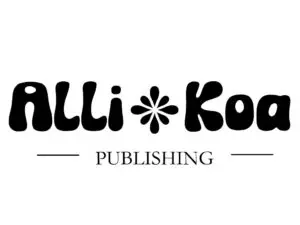
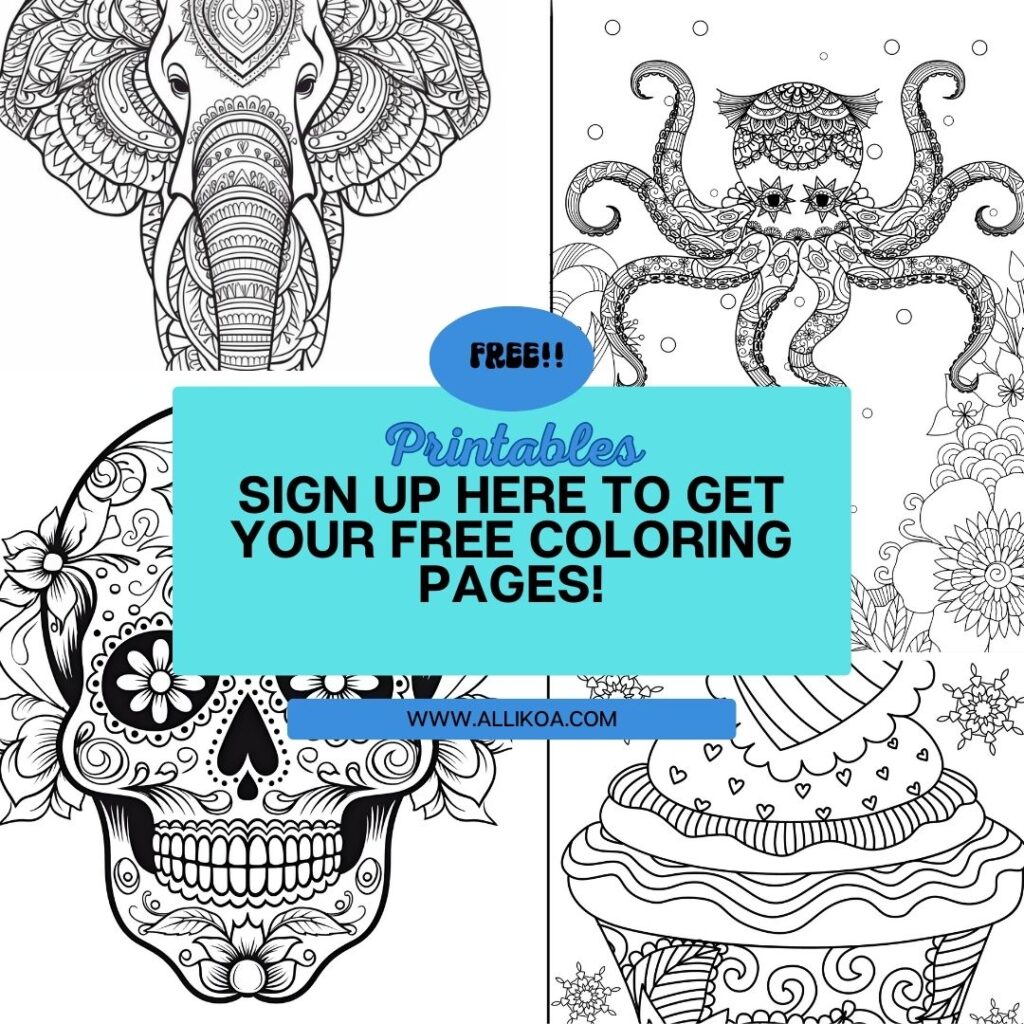
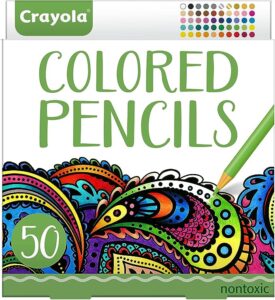
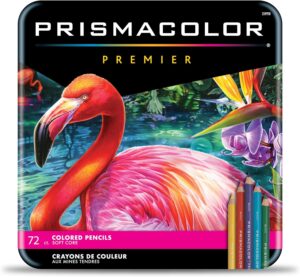

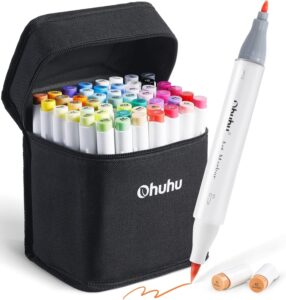
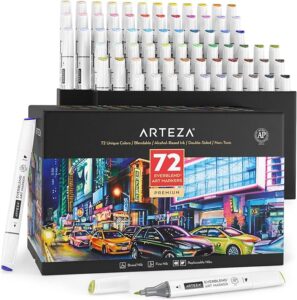

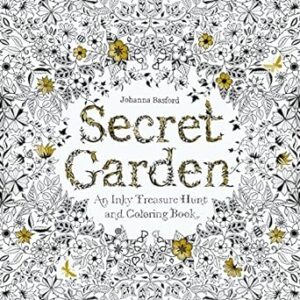




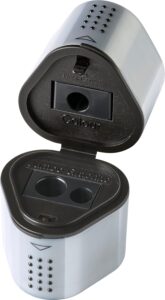
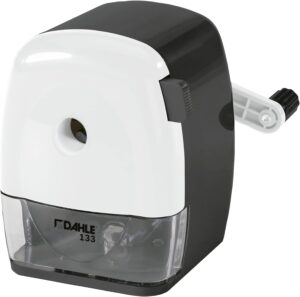
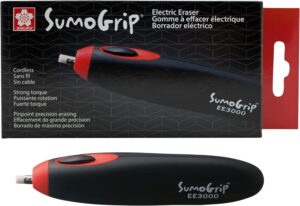
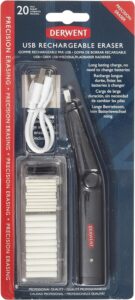
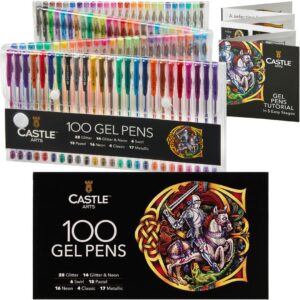
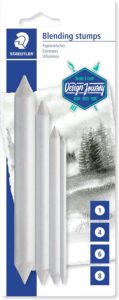
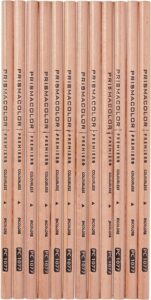
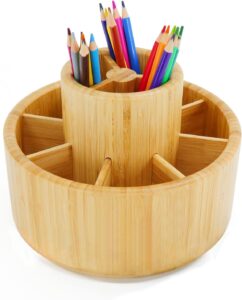
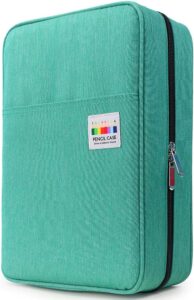
![ArtBin 6892AG 2-Tray Art Supply Box, Portable Art & Craft Organizer with Lift-Up Trays, [1] Plastic Storage Case, Gray/Black Model number 6892AG](https://allikoa.com/wp-content/uploads/2024/02/artbin-300x223.jpg)
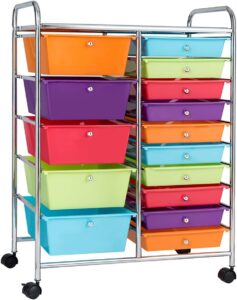
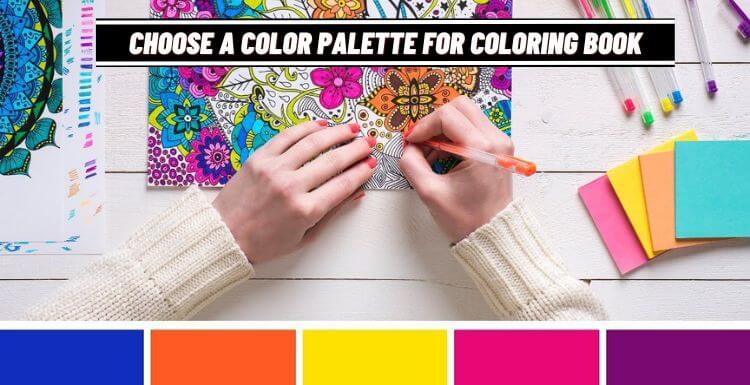


Comments are closed.